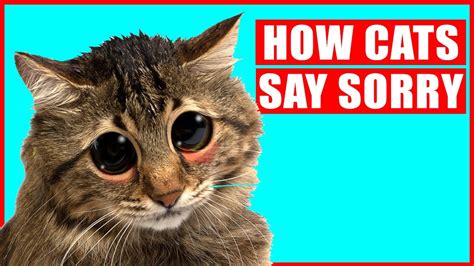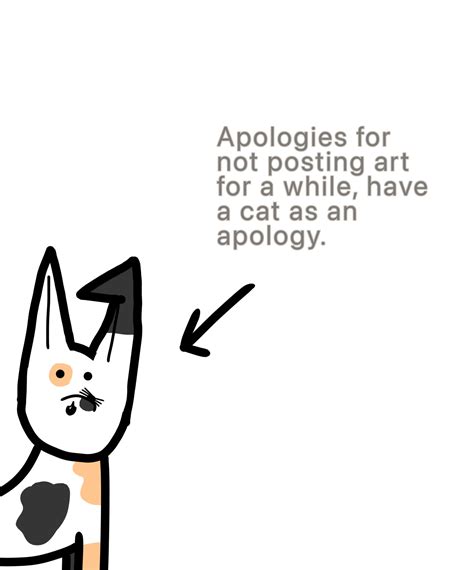
An American Bully dog named Nala is captivating the internet with her striking eyes, a rare genetic anomaly resulting in one eye being blue and the other brown, a condition known as heterochromia iridum.
Nala, a two-year-old American Bully from the U.K., has become an internet sensation due to her distinctive eyes, which her owner, Megan Lewis, describes as a “million-to-one” occurrence. Lewis initially acquired Nala for breeding purposes, but she has since become a beloved pet and social media star. Nala’s unique appearance has garnered her a significant following on platforms like TikTok and Instagram, where videos showcasing her captivating gaze have amassed millions of views and likes. Lewis told Yahoo, “I just thought she was beautiful,” upon first seeing Nala. “I hadn’t seen a dog with eyes like that before.”
Heterochromia in dogs, although visually striking, is generally not associated with health problems and does not affect the animal’s vision. This condition arises from variations in the concentration and distribution of melanin, the pigment responsible for coloring skin, hair, and eyes. While heterochromia is observed in several dog breeds, its occurrence in American Bullies is considered relatively rare, contributing to Nala’s exceptional appeal. Lewis emphasizes that Nala is more than just her unique eyes; she is a loving and playful companion who enjoys walks in the park and cuddles on the sofa.
The Science Behind Heterochromia
Heterochromia iridum, the scientific term for having different colored eyes, is a condition characterized by variations in iris pigmentation. The iris, the colored part of the eye, gets its color from melanin. The amount and distribution of melanin determine the specific color of the iris. High concentrations of melanin typically result in brown eyes, while lower concentrations lead to blue or green eyes.
Heterochromia can be either genetic or acquired. Genetic heterochromia, as seen in Nala, is typically inherited and present from birth. Acquired heterochromia, on the other hand, can result from injury, disease, or certain medications. In dogs, genetic heterochromia is more common and is often associated with specific breeds.
The precise genetic mechanisms underlying heterochromia are complex and not fully understood. However, it is believed to involve variations in genes that regulate melanin production and distribution. These genes can influence the migration of melanocytes, the cells that produce melanin, to the iris during embryonic development. If melanocytes do not migrate evenly to both irises, it can result in different levels of pigmentation, leading to heterochromia.
Heterochromia is categorized into complete heterochromia, where each eye has a completely different color (as seen in Nala), and partial heterochromia, where only part of one iris has a different color. The prevalence of heterochromia varies depending on the species and breed. In humans, it is relatively rare, affecting less than 1% of the population. However, it is more common in certain animals, including dogs, cats, and horses.
Heterochromia in Dogs: Breeds and Prevalence
While heterochromia can occur in various dog breeds, it is more frequently observed in certain breeds. These breeds include:
- Siberian Huskies: Siberian Huskies are perhaps the most well-known breed associated with heterochromia. The condition is relatively common in this breed and is often considered a breed characteristic.
- Australian Shepherds: Australian Shepherds are another breed in which heterochromia is frequently seen. The Merle gene, which is responsible for the breed’s distinctive coat pattern, is also linked to heterochromia.
- Border Collies: Border Collies can also exhibit heterochromia, although it is less common than in Siberian Huskies or Australian Shepherds.
- Dachshunds: Dachshunds, particularly those with the dapple (Merle) pattern, can occasionally have heterochromia.
- Great Danes: Great Danes with the harlequin pattern are also known to sometimes exhibit heterochromia.
- American Bully: While less common than in the breeds listed above, heterochromia can occur in American Bullies, making Nala’s case particularly noteworthy.
The prevalence of heterochromia within these breeds varies. In Siberian Huskies, for example, some studies suggest that as many as 10% of individuals may have heterochromia. In other breeds, the prevalence is lower. The genetic factors contributing to heterochromia can differ between breeds, and further research is needed to fully understand the underlying mechanisms.
Nala’s Rise to Internet Fame
Nala’s unique eyes have been the primary driver of her internet fame. Her owner, Megan Lewis, started sharing photos and videos of Nala on social media platforms, particularly TikTok and Instagram. The captivating contrast between Nala’s blue and brown eyes quickly caught the attention of viewers. Videos showcasing Nala’s eyes have garnered millions of views and likes, making her a viral sensation.
Nala’s social media accounts feature a variety of content, including photos and videos of her playing, going for walks, and interacting with her owner. Lewis also uses the platform to educate people about American Bullies and to dispel common misconceptions about the breed.
The comments on Nala’s posts are filled with admiration and wonder. Many viewers express amazement at her unique eyes, while others share their own experiences with dogs with heterochromia. Nala’s popularity has also led to opportunities for collaborations with pet brands and influencers.
Lewis has expressed gratitude for the positive response to Nala’s social media presence. She hopes that Nala’s story will help to promote responsible pet ownership and to raise awareness about the American Bully breed. She also emphasizes that Nala is more than just her unique eyes; she is a loving and loyal companion who brings joy to her life.
American Bullies: Breed Overview and Controversy
The American Bully is a relatively new dog breed that originated in the United States in the 1980s and 1990s. The breed was developed by crossing American Pit Bull Terriers with other breeds, including American Bulldogs, English Bulldogs, and Olde English Bulldogges. The goal was to create a dog with a similar appearance to the American Pit Bull Terrier but with a more gentle and family-friendly temperament.
American Bullies are known for their muscular build, broad chest, and distinctive head shape. They come in a variety of sizes and colors. The United Kennel Club (UKC) recognized the American Bully as a distinct breed in 2013.
Despite their growing popularity, American Bullies have faced controversy due to their resemblance to American Pit Bull Terriers, which are often subject to breed-specific legislation (BSL). BSL refers to laws that restrict or ban the ownership of certain dog breeds deemed to be dangerous. These laws are often based on the appearance of the dog rather than its individual behavior.
Advocates for American Bullies argue that the breed is distinct from American Pit Bull Terriers and that they are generally friendly and well-behaved dogs when properly trained and socialized. They also point out that BSL is ineffective and discriminatory, as it punishes responsible dog owners based on the breed of their dog.
Responsible breeders and owners of American Bullies emphasize the importance of early socialization, positive reinforcement training, and responsible ownership. They also work to educate the public about the breed and to dispel common misconceptions.
The Ethical Considerations of Breeding for Unique Traits
Nala’s case raises important ethical considerations about the breeding of dogs for unique or unusual traits. While heterochromia is generally not associated with health problems, some breeders may focus on breeding for specific traits without considering the overall health and well-being of the dogs.
Breeding for extreme physical traits, such as exaggerated features or specific coat colors, can sometimes lead to health problems. For example, dogs with brachycephalic (short-nosed) breeds, such as Bulldogs and Pugs, are prone to respiratory problems due to their shortened airways. Similarly, dogs with certain coat colors may be more susceptible to skin problems or other health issues.
Responsible breeders prioritize the health and temperament of their dogs over appearance. They conduct health testing to screen for genetic diseases and breed only dogs with sound temperaments. They also provide proper care and socialization for their puppies to ensure that they grow into well-adjusted adults.
Potential dog owners should be aware of the ethical considerations involved in breeding for specific traits and should choose breeders who prioritize the health and well-being of their dogs. They should also be prepared to provide proper care and training for their dogs to ensure that they live happy and healthy lives.
The Broader Context of Animal Viral Sensations
Nala’s story is just one example of how animals can become viral sensations on the internet. Social media platforms have created new opportunities for animals to gain widespread attention and to connect with audiences around the world.
There are many reasons why people are drawn to animal-related content. Animals can be cute, funny, and heartwarming. They can also provide companionship and emotional support. Social media allows people to share their love of animals with others and to connect with like-minded individuals.
However, the phenomenon of animal viral sensations also raises some concerns. Some animals may be exploited for attention, and their welfare may be compromised. It is important to be mindful of the ethical considerations involved in sharing animal-related content online and to ensure that animals are treated with respect and compassion.
The Future of Nala’s Internet Fame
Nala’s internet fame is likely to continue to grow as more people discover her unique eyes and charming personality. Her owner, Megan Lewis, plans to continue sharing photos and videos of Nala on social media platforms and to use her platform to promote responsible pet ownership and to raise awareness about the American Bully breed.
Nala’s story serves as a reminder of the power of social media to connect people with animals and to create communities around shared interests. It also highlights the importance of responsible pet ownership and the ethical considerations involved in breeding for specific traits. As Nala’s fame continues to spread, she will undoubtedly continue to bring joy and wonder to people around the world.
The Importance of Responsible Pet Ownership
Nala’s story, while captivating due to her unique eyes, underscores the broader importance of responsible pet ownership. Owning a dog, regardless of breed or unique physical characteristics, is a significant responsibility that requires commitment, time, and resources. Responsible pet ownership encompasses several key aspects:
- Providing Proper Care: This includes providing adequate food, water, shelter, and veterinary care. Dogs require regular check-ups, vaccinations, and preventative treatments to stay healthy. It also involves providing appropriate exercise and mental stimulation to keep them physically and mentally fit.
- Training and Socialization: Training and socialization are essential for ensuring that dogs are well-behaved and safe around people and other animals. Positive reinforcement training methods are generally recommended, as they are more effective and humane than punishment-based methods. Early socialization is crucial for exposing puppies to a variety of sights, sounds, and experiences to help them develop into well-adjusted adults.
- Responsible Breeding Practices: If considering breeding a dog, it is important to do so responsibly. This includes conducting health testing to screen for genetic diseases and breeding only dogs with sound temperaments. It also involves providing proper care for the mother and puppies and finding responsible homes for the puppies.
- Adhering to Local Laws and Regulations: Pet owners are responsible for adhering to local laws and regulations regarding pet ownership. This may include licensing, vaccination requirements, leash laws, and breed-specific legislation.
- Preventing Overpopulation: Contributing to the prevention of pet overpopulation is a crucial aspect of responsible ownership. Spaying or neutering dogs not intended for breeding is highly recommended.
- Commitment and Lifelong Care: Owning a dog is a long-term commitment. Dogs typically live for 10-15 years or more, and owners must be prepared to provide care for them throughout their lives. This includes being prepared for the financial and emotional costs of pet ownership.
By practicing responsible pet ownership, individuals can ensure that their dogs live happy, healthy, and fulfilling lives and that they are valued members of the community.
The Role of Social Media in Animal Welfare
While Nala’s viral fame is a positive story, showcasing the beauty and uniqueness of animals, social media can also play a crucial role in promoting animal welfare and advocating for animal rights. Social media platforms can be used to:
- Raise Awareness about Animal Issues: Social media can be used to raise awareness about a wide range of animal issues, including animal cruelty, neglect, and exploitation. By sharing information, videos, and photos, individuals can educate others about these issues and encourage them to take action.
- Promote Animal Adoption: Animal shelters and rescue organizations use social media to showcase adoptable animals and to connect them with potential adopters. Social media can also be used to share success stories of adopted animals and to encourage others to consider adopting.
- Advocate for Animal Rights: Social media can be used to advocate for animal rights and to promote policies that protect animals. Individuals can use social media to contact their elected officials, sign petitions, and participate in online campaigns.
- Support Animal Welfare Organizations: Social media can be used to support animal welfare organizations by donating, volunteering, and spreading awareness about their work.
- Combat Misinformation: Social media can be used to combat misinformation about animals and to promote accurate and science-based information. This is particularly important in the context of breed-specific legislation, where misinformation can lead to discriminatory policies.
However, it’s important to critically evaluate the information found on social media regarding animal welfare. Always verify information with reputable sources and be cautious of emotionally charged content that may not present a balanced view. Support organizations with proven track records and transparent practices. By using social media responsibly, individuals can contribute to a more humane and compassionate world for animals.
FAQ about Nala and Heterochromia:
- What is heterochromia and how does it affect Nala?
Heterochromia iridum is a condition where an individual has different colored eyes. It’s caused by variations in the concentration and distribution of melanin in the iris. In Nala’s case, she has complete heterochromia, meaning one eye is blue and the other is brown. This condition does not affect her vision or overall health. As Megan Lewis, Nala’s owner, has shared, Nala’s heterochromia is purely aesthetic and doesn’t impact her quality of life.
- Is heterochromia common in American Bullies?
While heterochromia can occur in various dog breeds, it’s considered relatively rare in American Bullies. This rarity contributes to Nala’s uniqueness and has played a role in her internet fame. Breeds like Siberian Huskies and Australian Shepherds are more commonly associated with this trait.
- How did Nala become famous on the internet?
Nala gained internet fame primarily due to her striking eyes. Her owner, Megan Lewis, began posting photos and videos of Nala on platforms like TikTok and Instagram. The unique contrast of her blue and brown eyes quickly captured the attention of viewers, leading to millions of views and likes. Her owner mentioned to Yahoo, “I just thought she was beautiful…I hadn’t seen a dog with eyes like that before.”
- Are there any health concerns associated with heterochromia in dogs?
In most cases, heterochromia is not associated with health problems in dogs. It is generally a benign condition that does not affect vision or overall health. However, it’s always a good idea to have a veterinarian check any dog with heterochromia to rule out any underlying medical conditions.
- What does Nala’s owner, Megan Lewis, hope to achieve with Nala’s social media presence?
Megan Lewis hopes to use Nala’s social media presence to promote responsible pet ownership, dispel common misconceptions about the American Bully breed, and showcase Nala’s loving and playful personality. She aims to highlight that Nala is more than just her unique eyes; she is a cherished companion who brings joy to her life.









